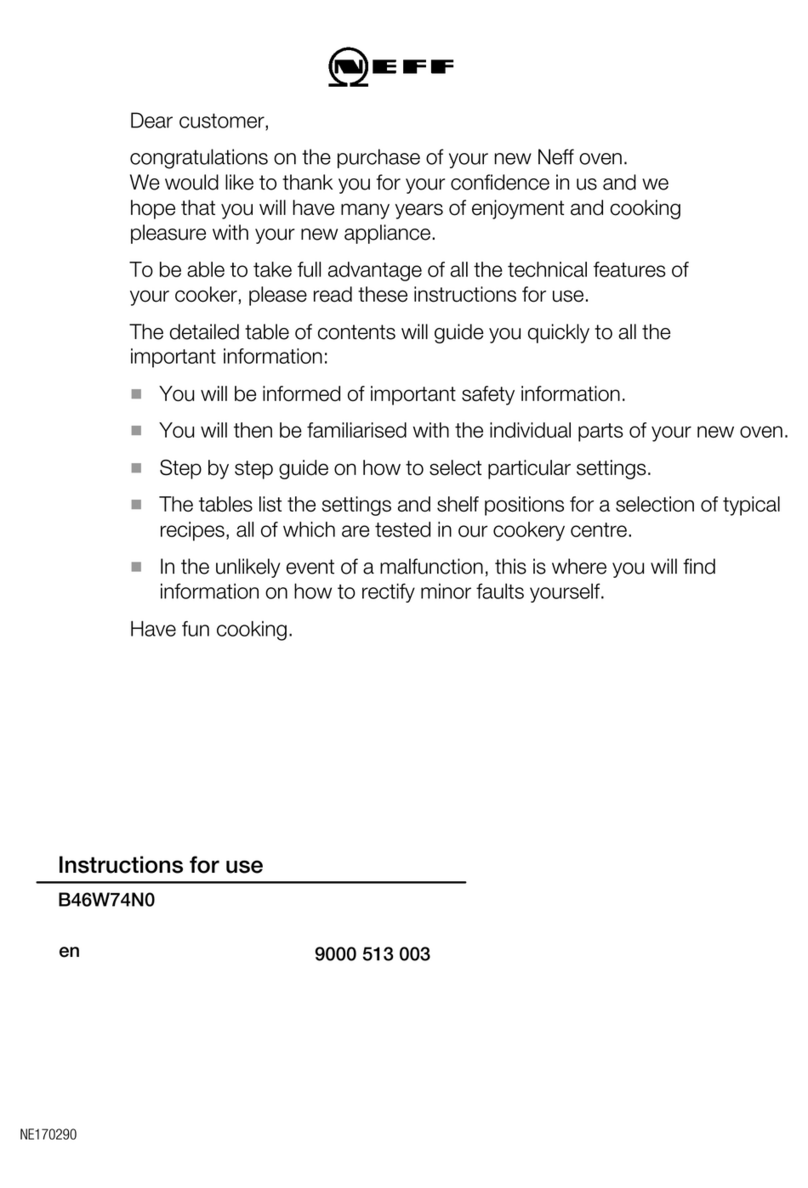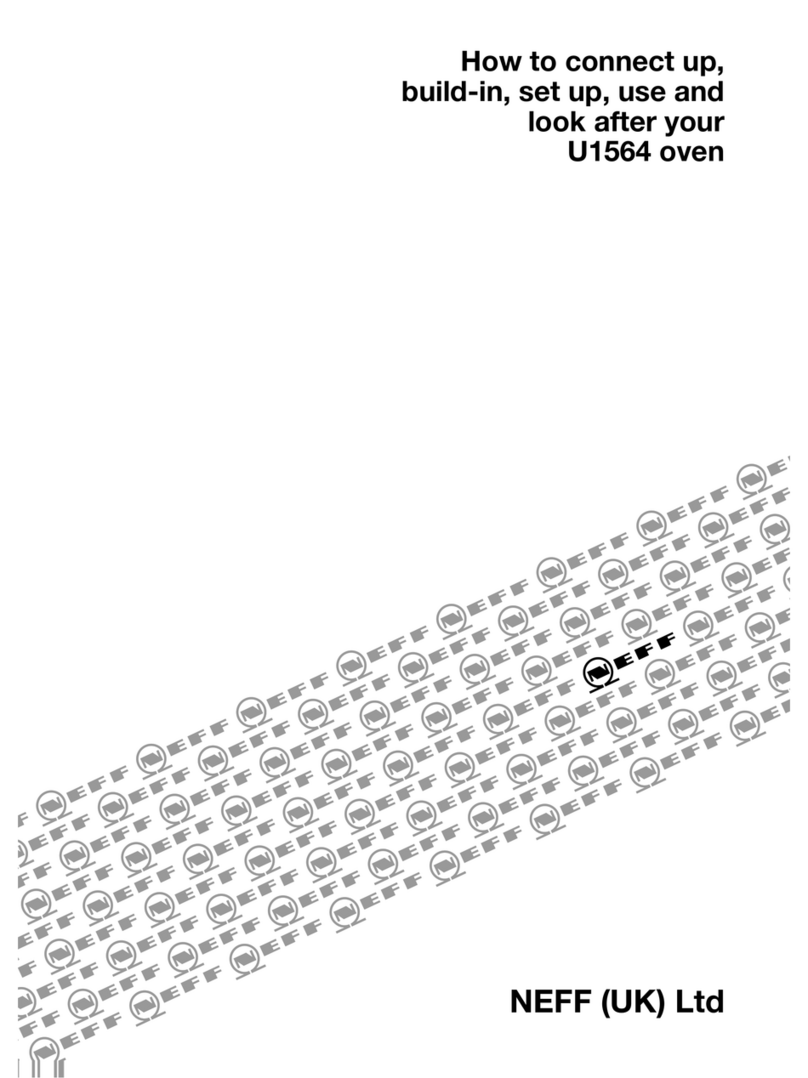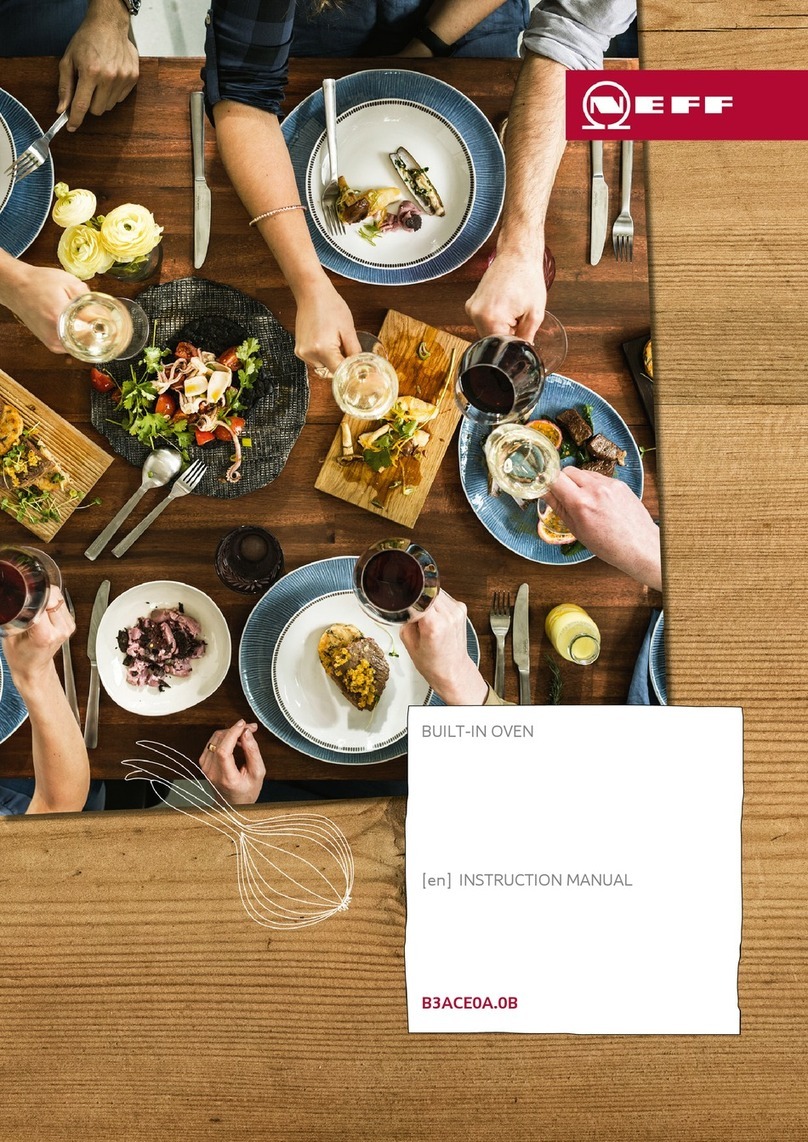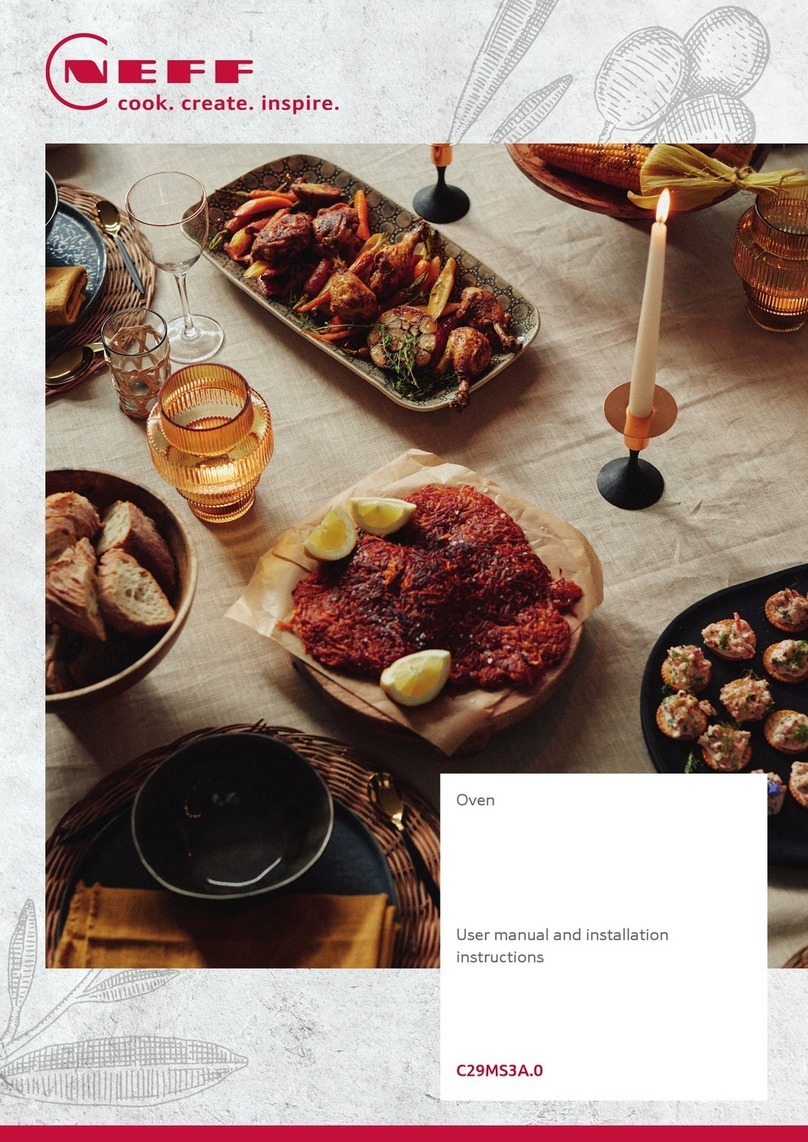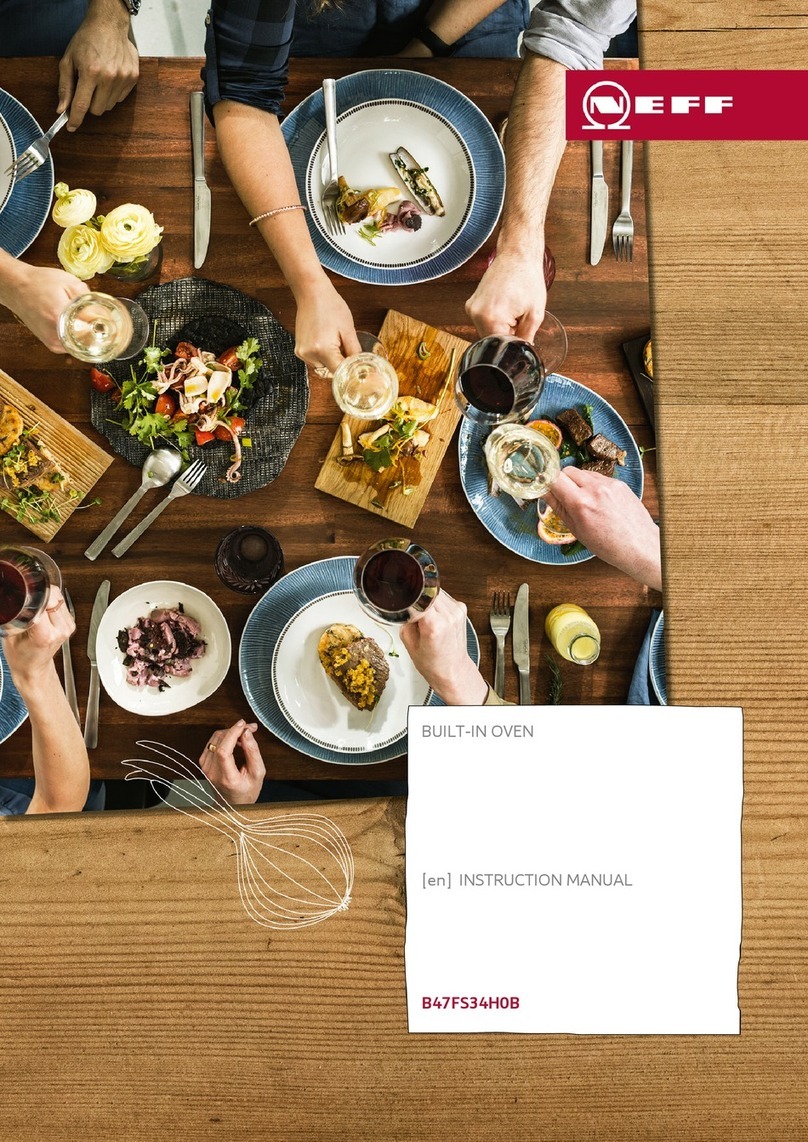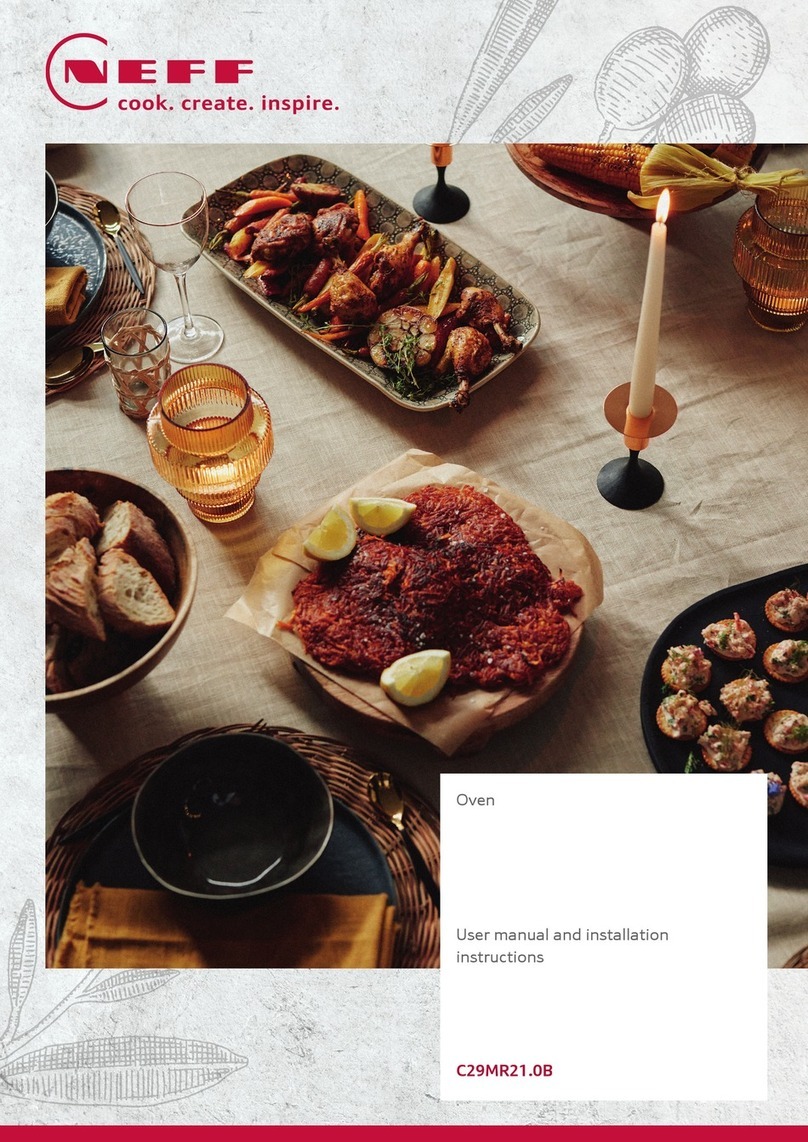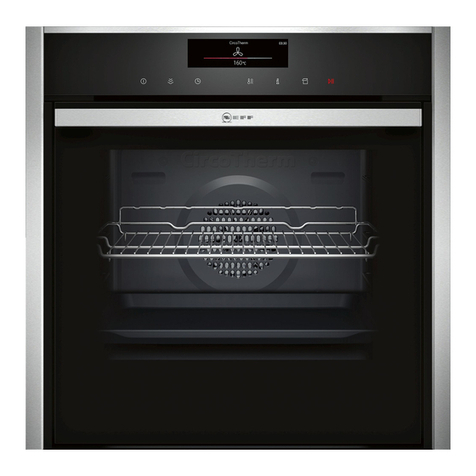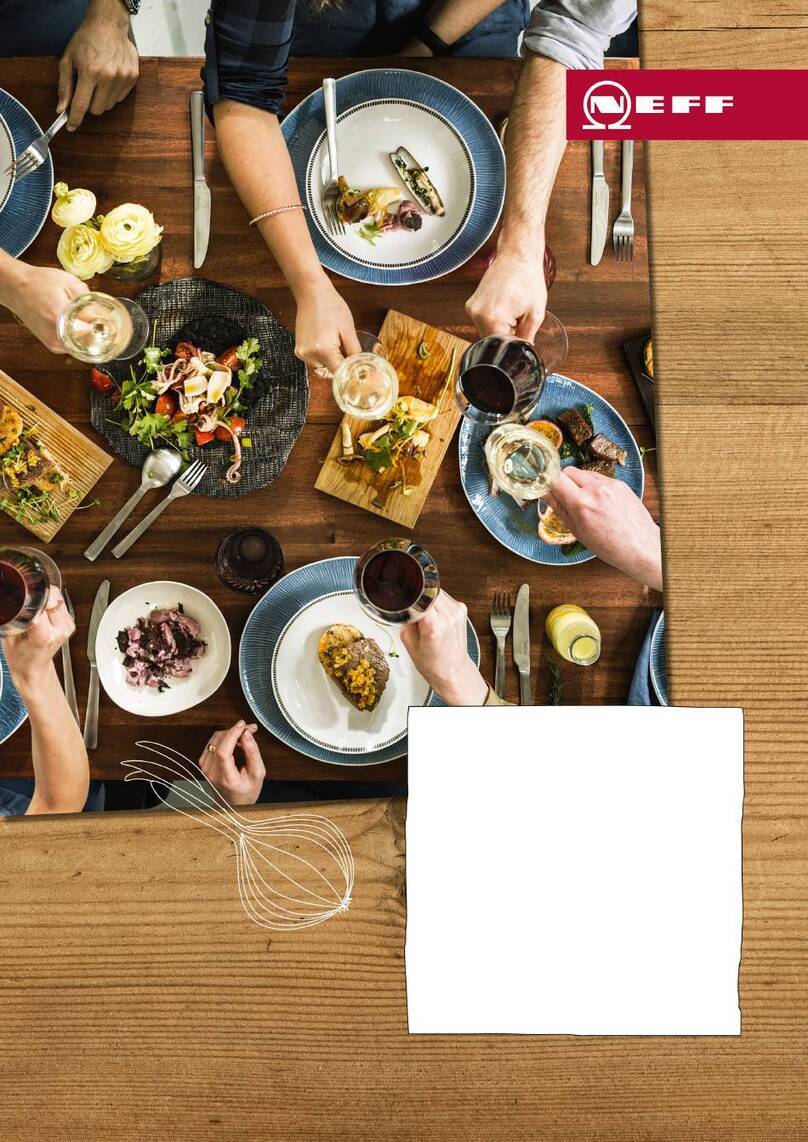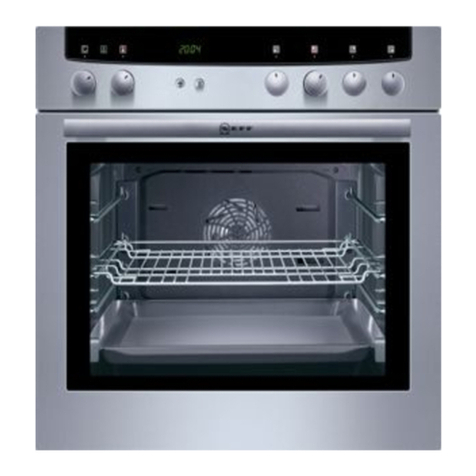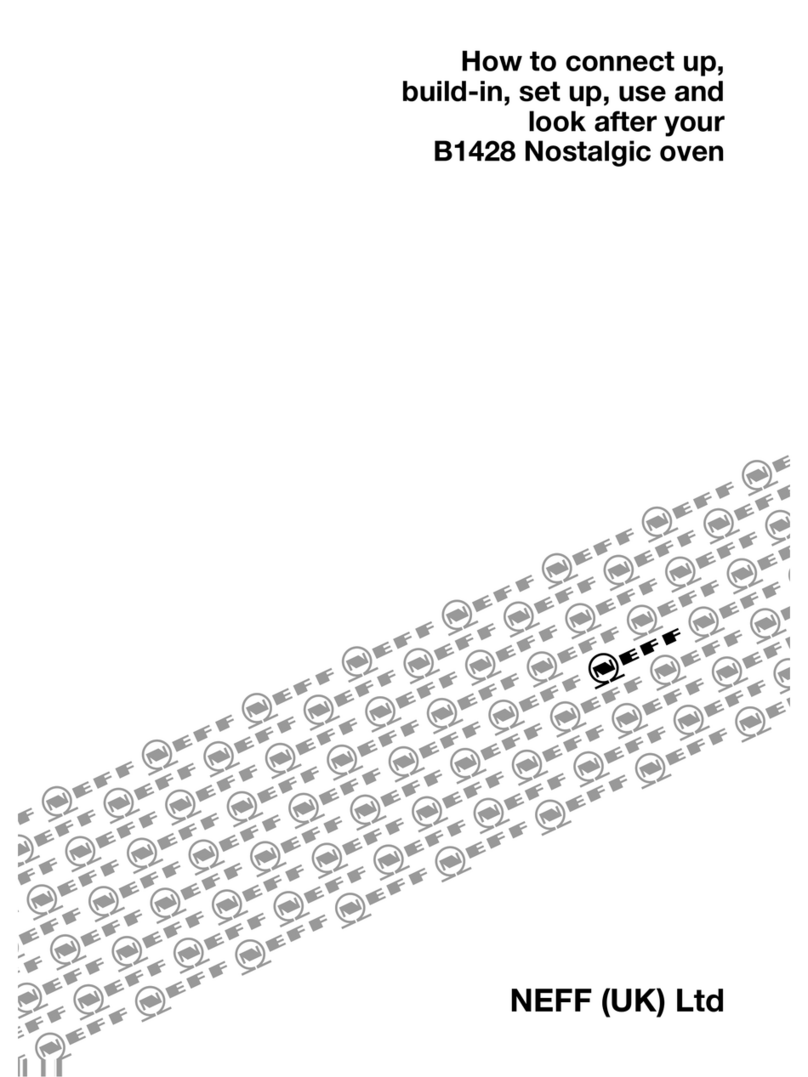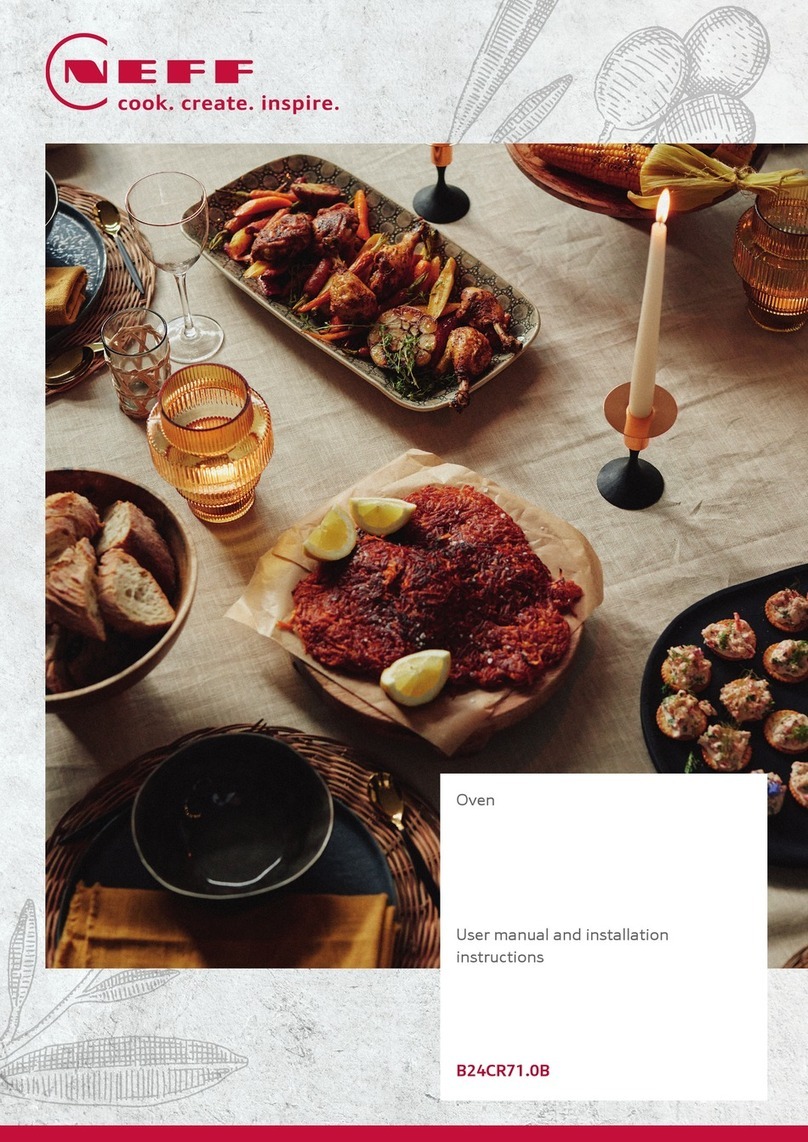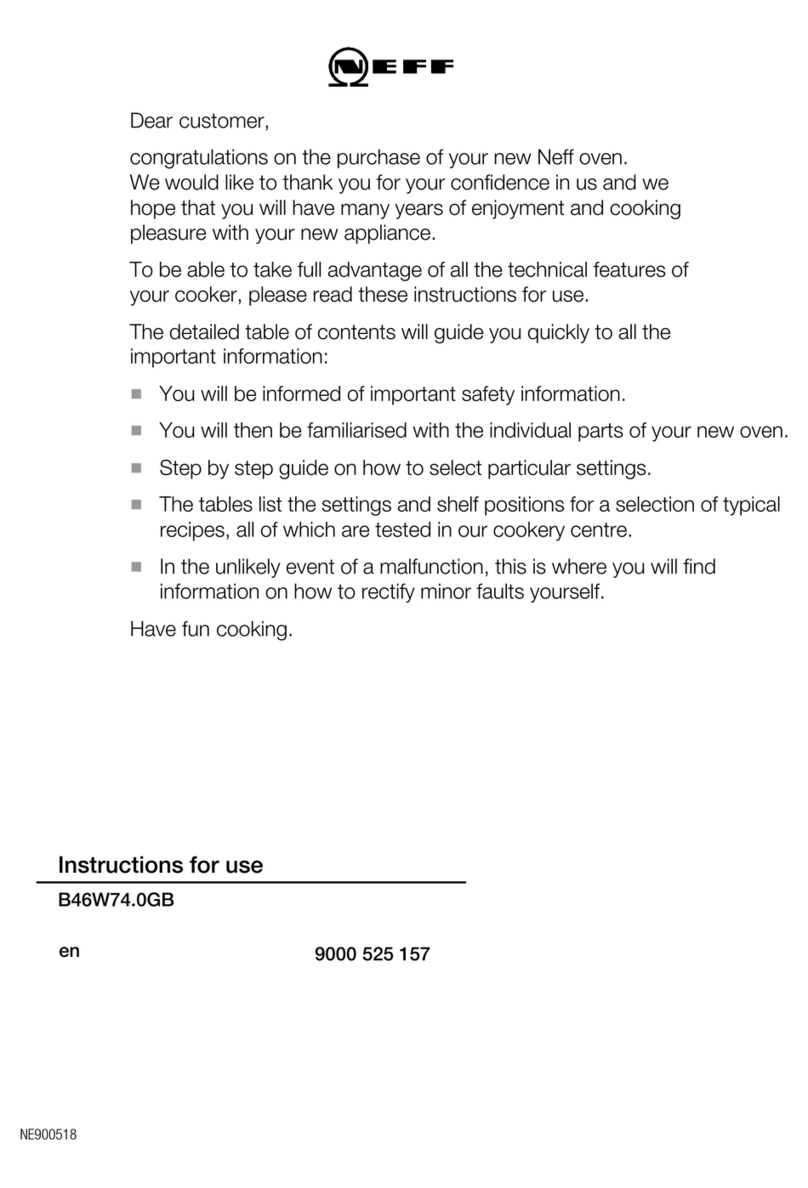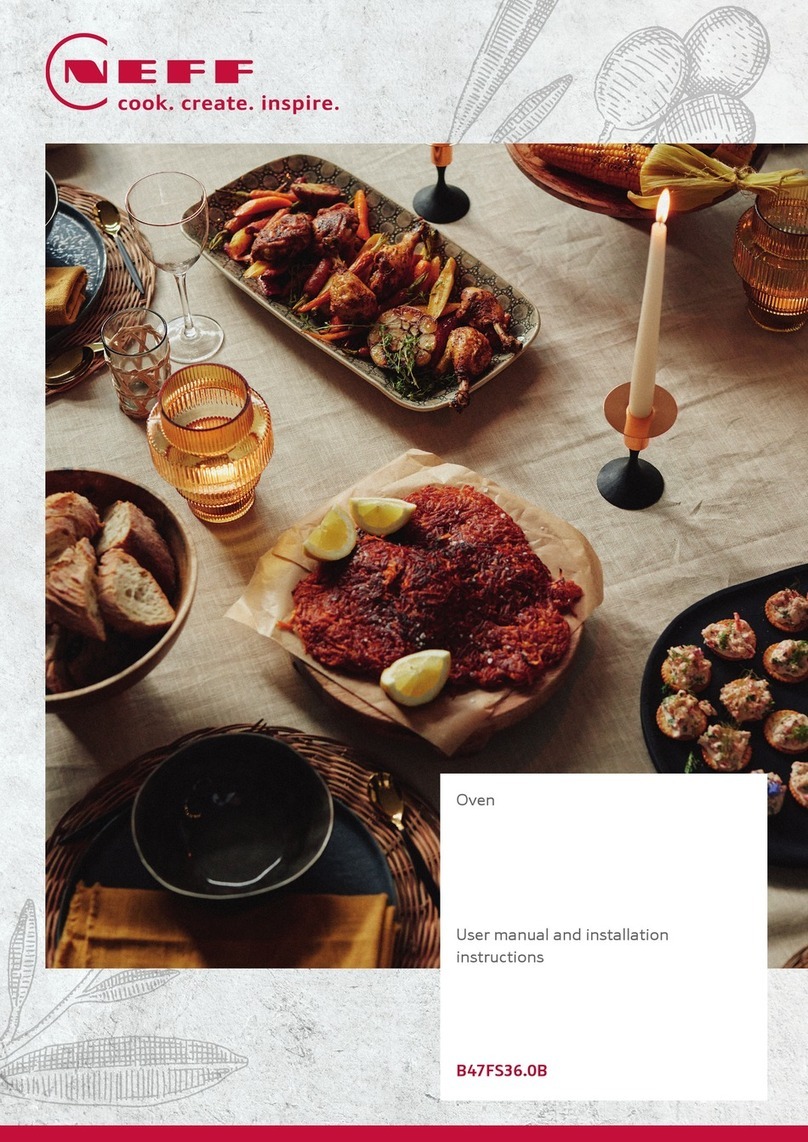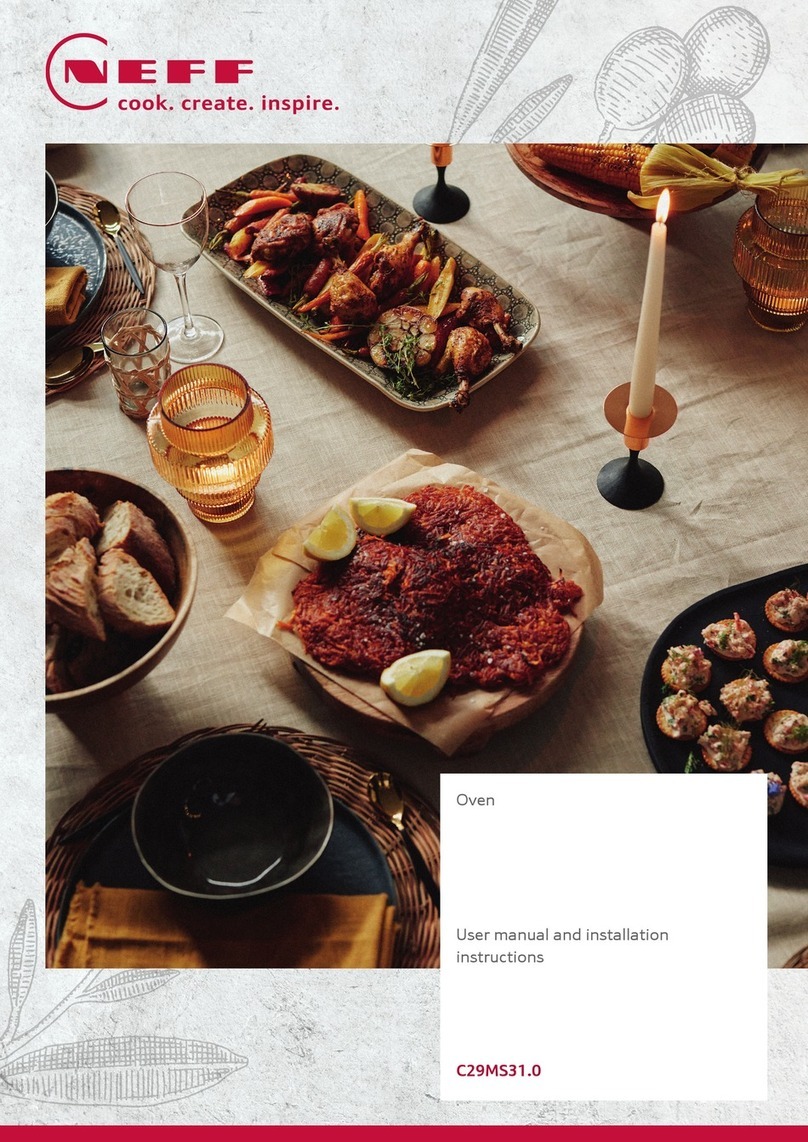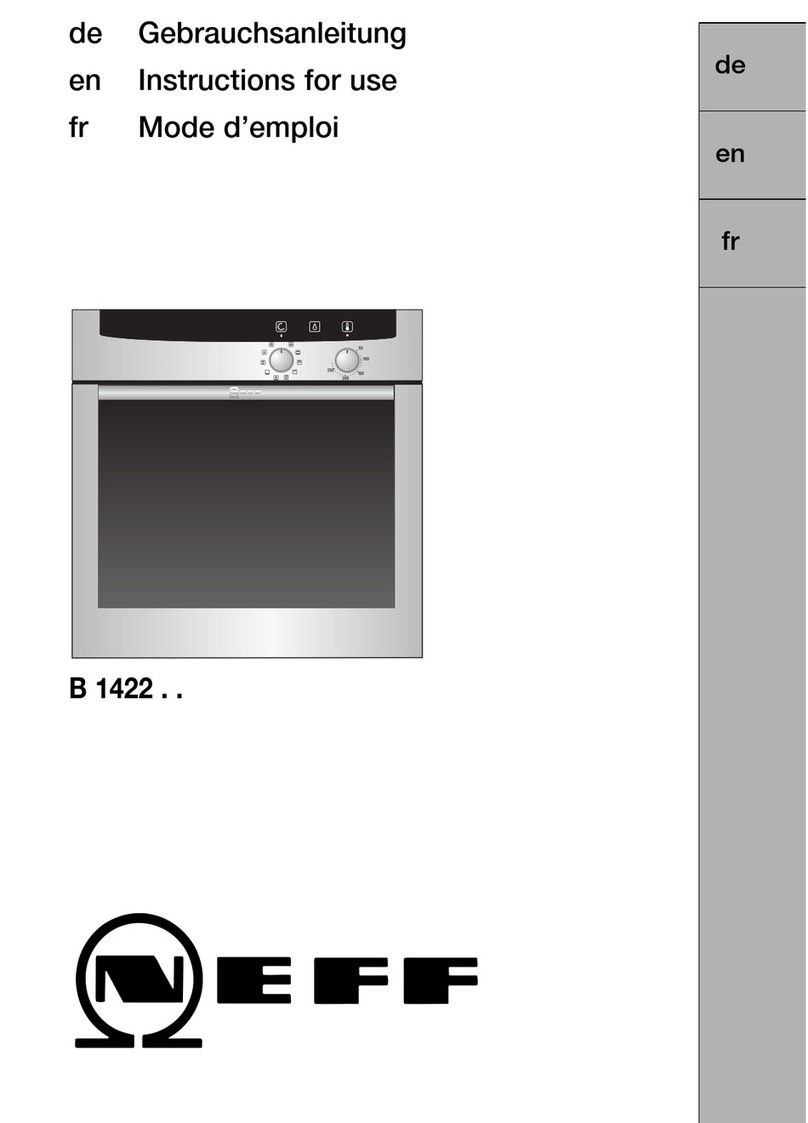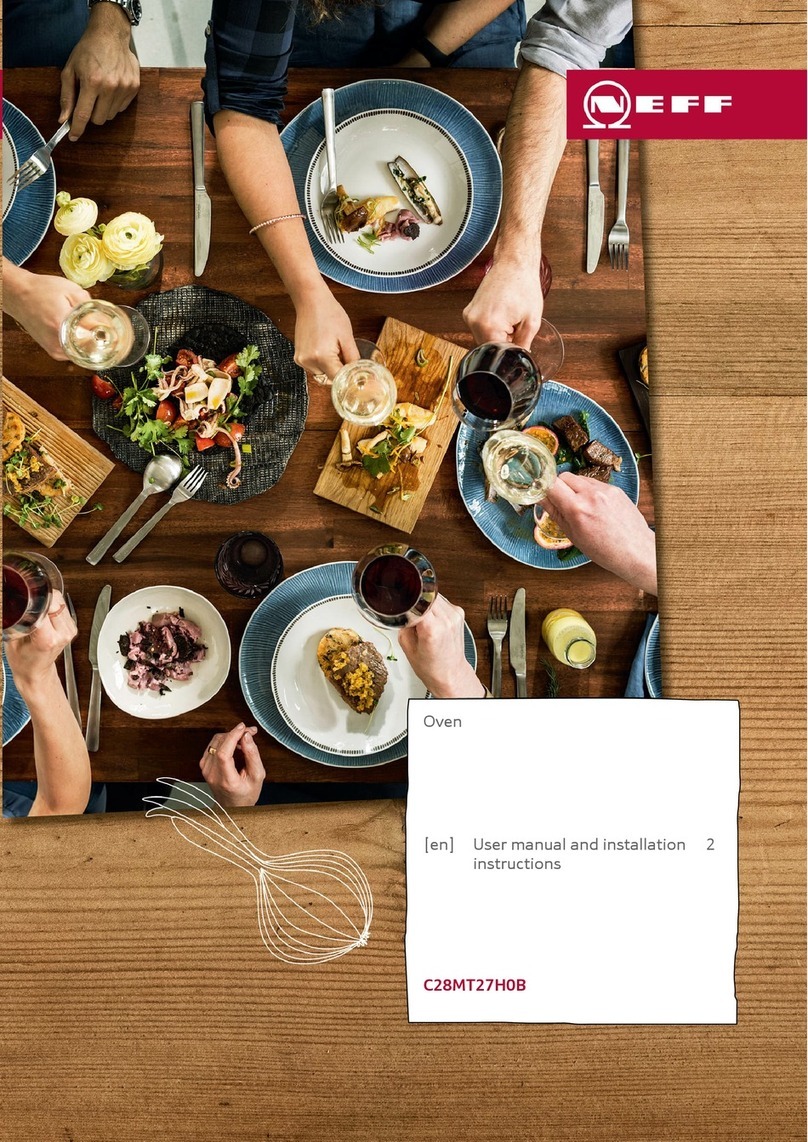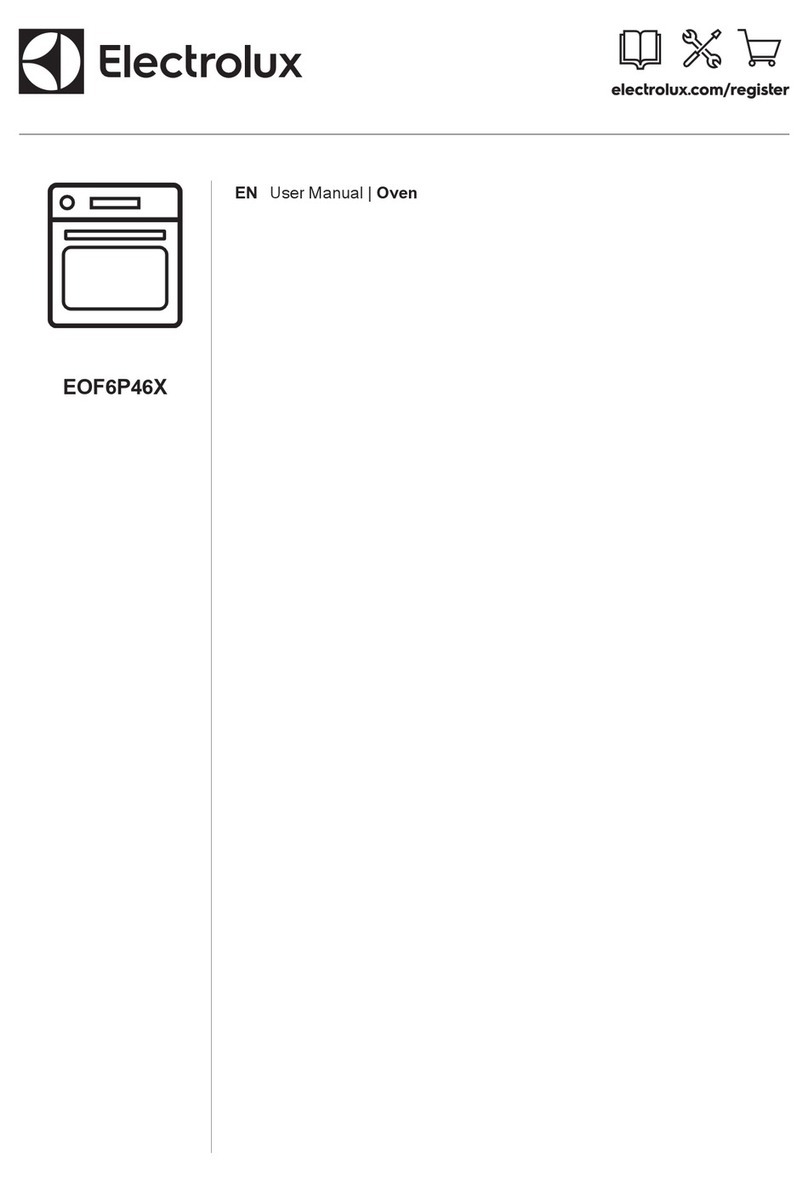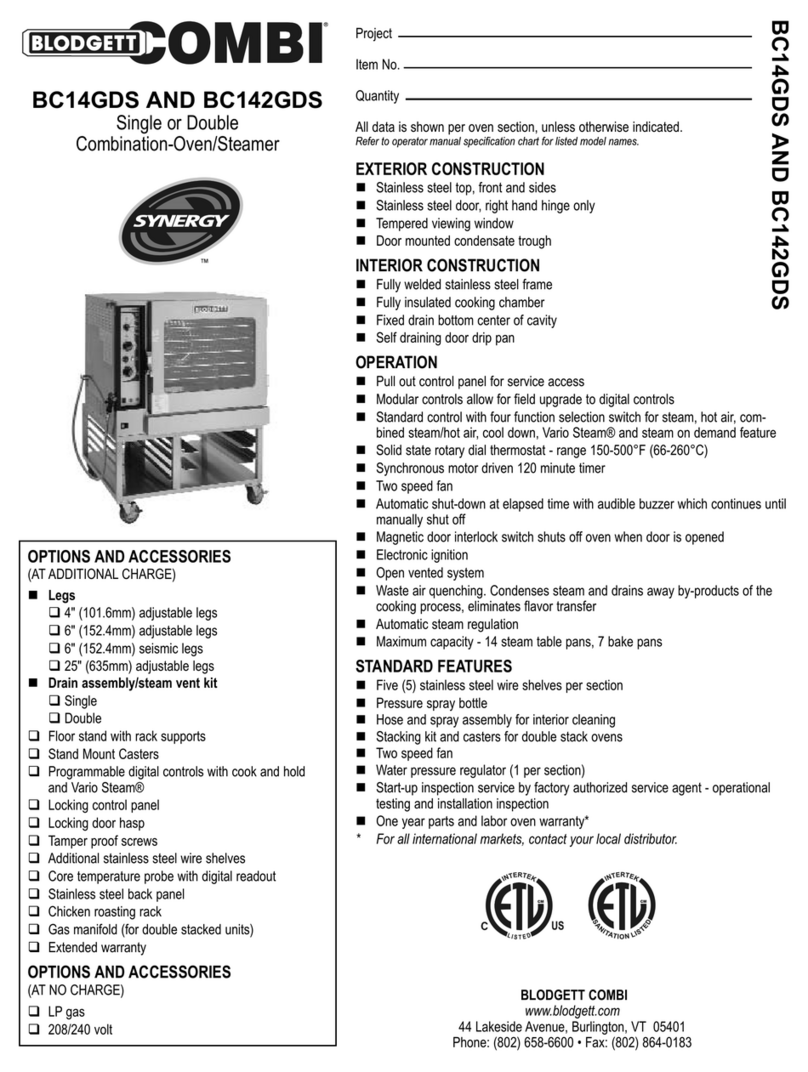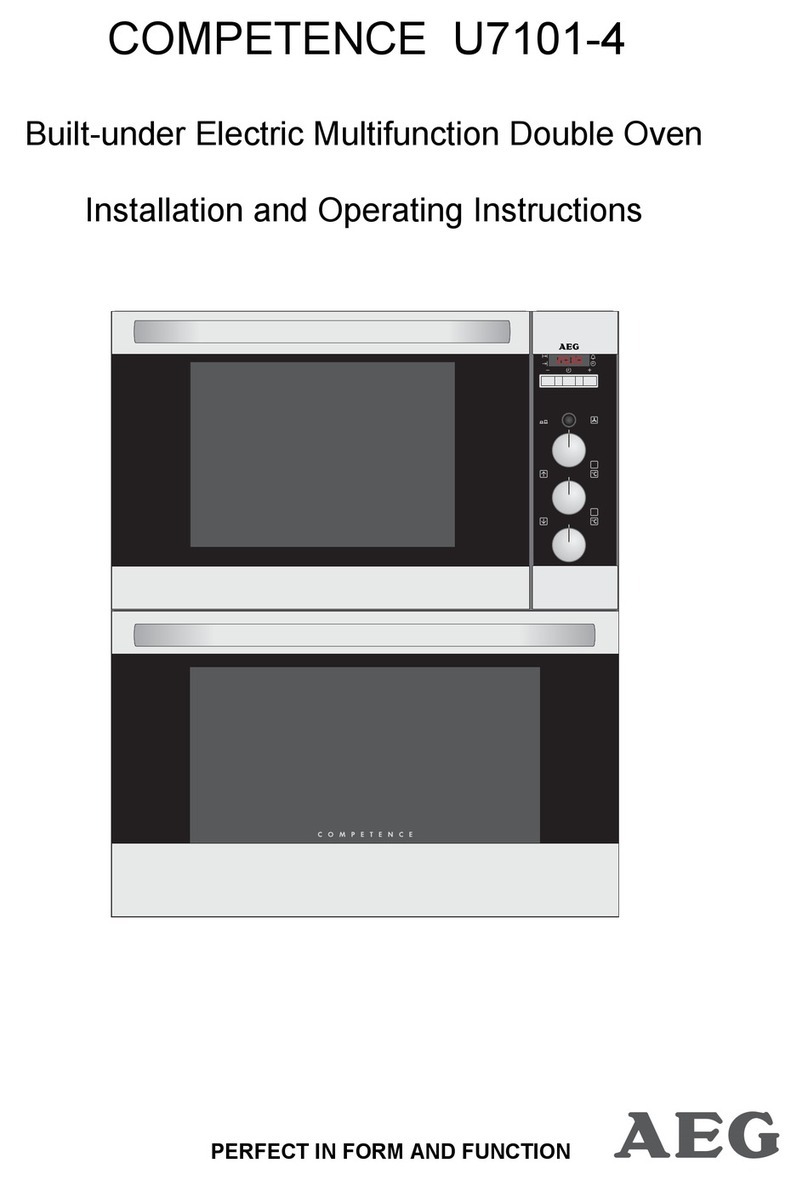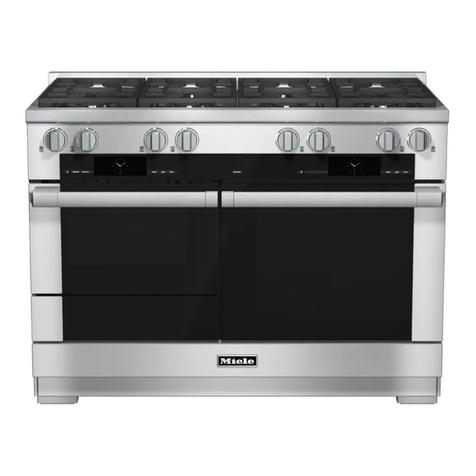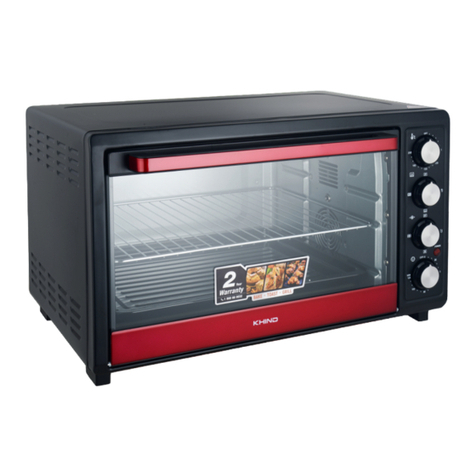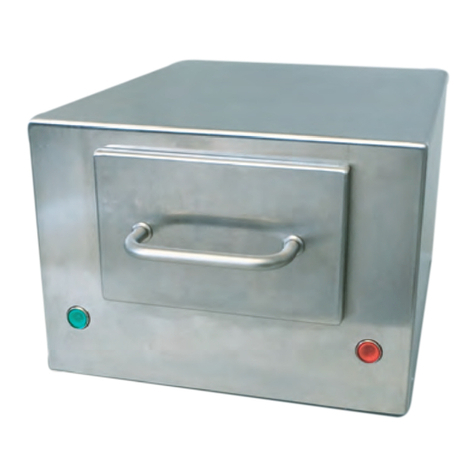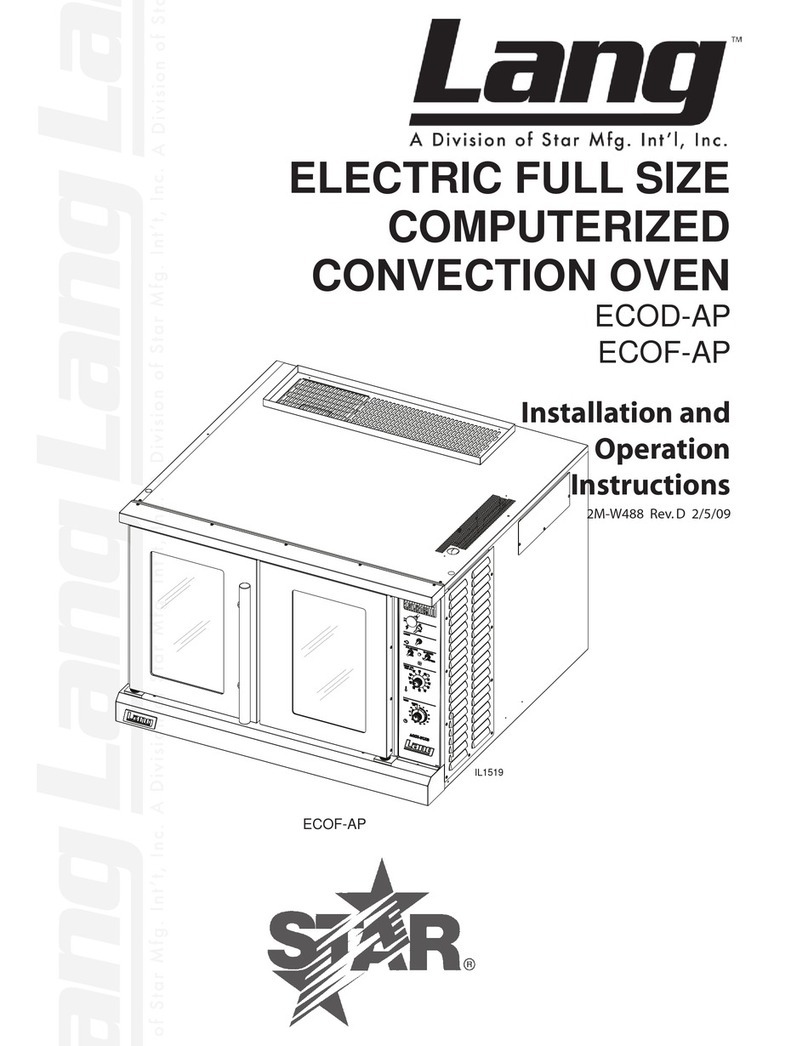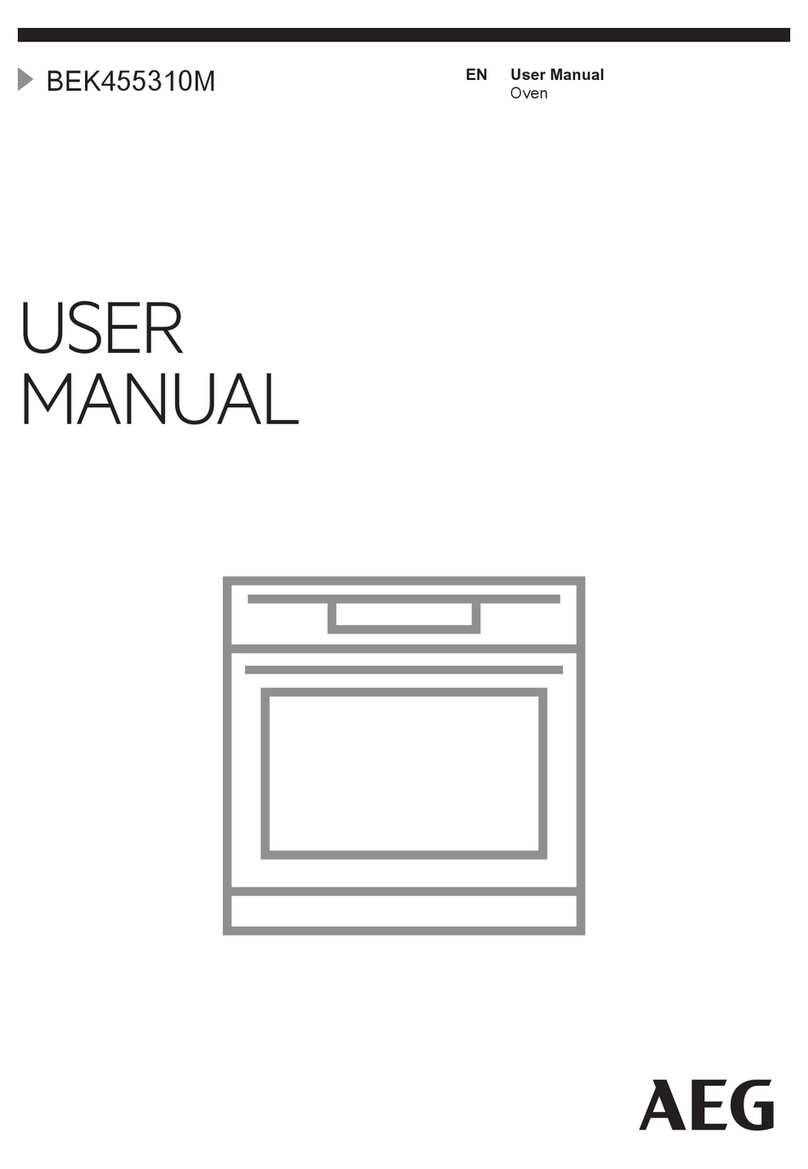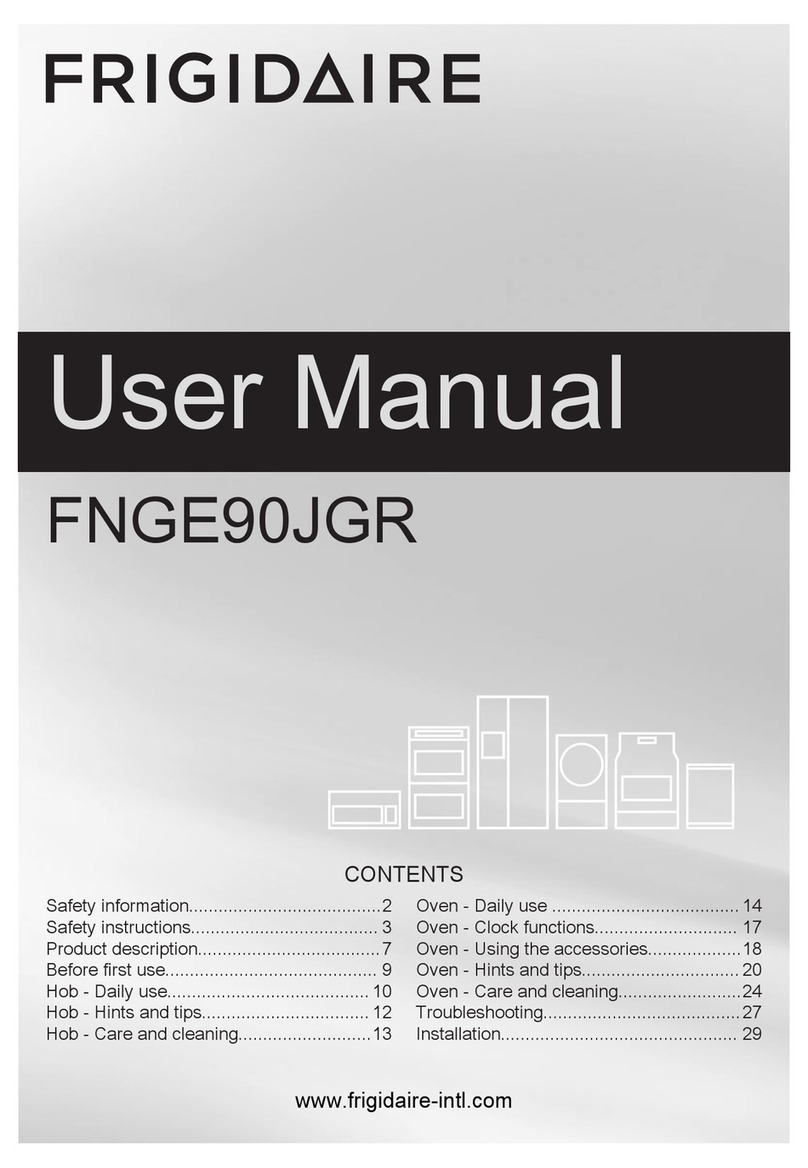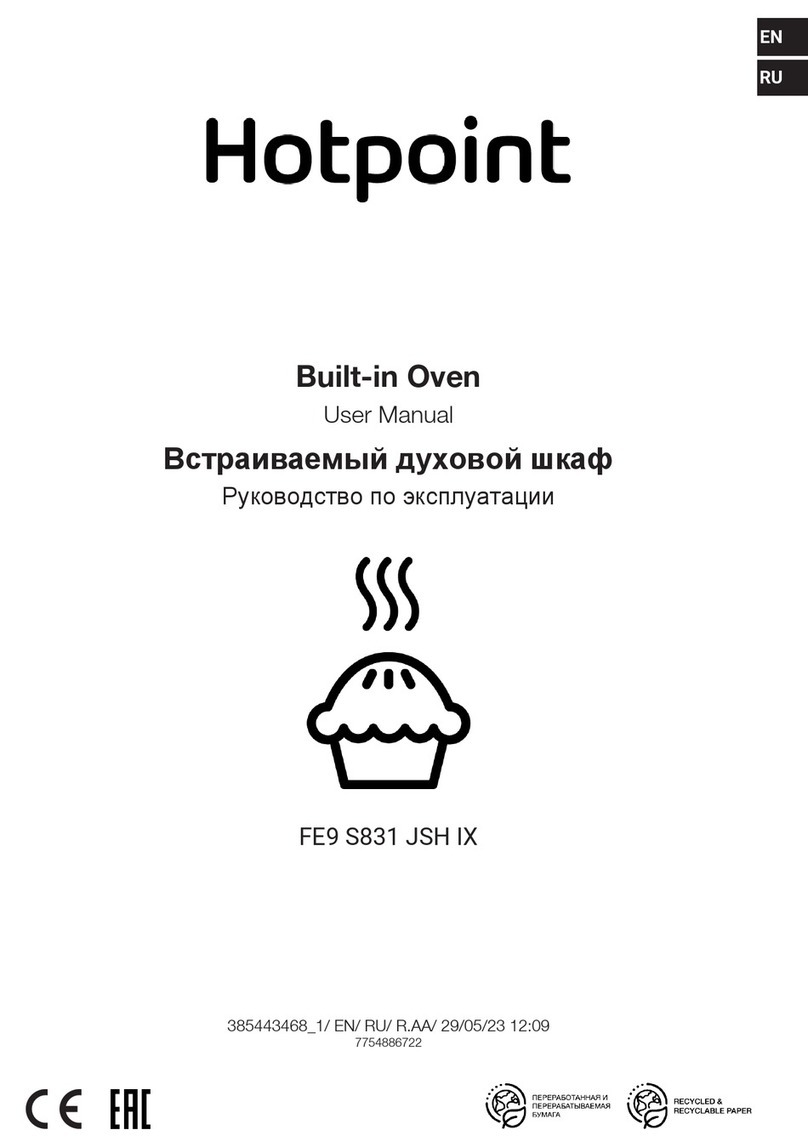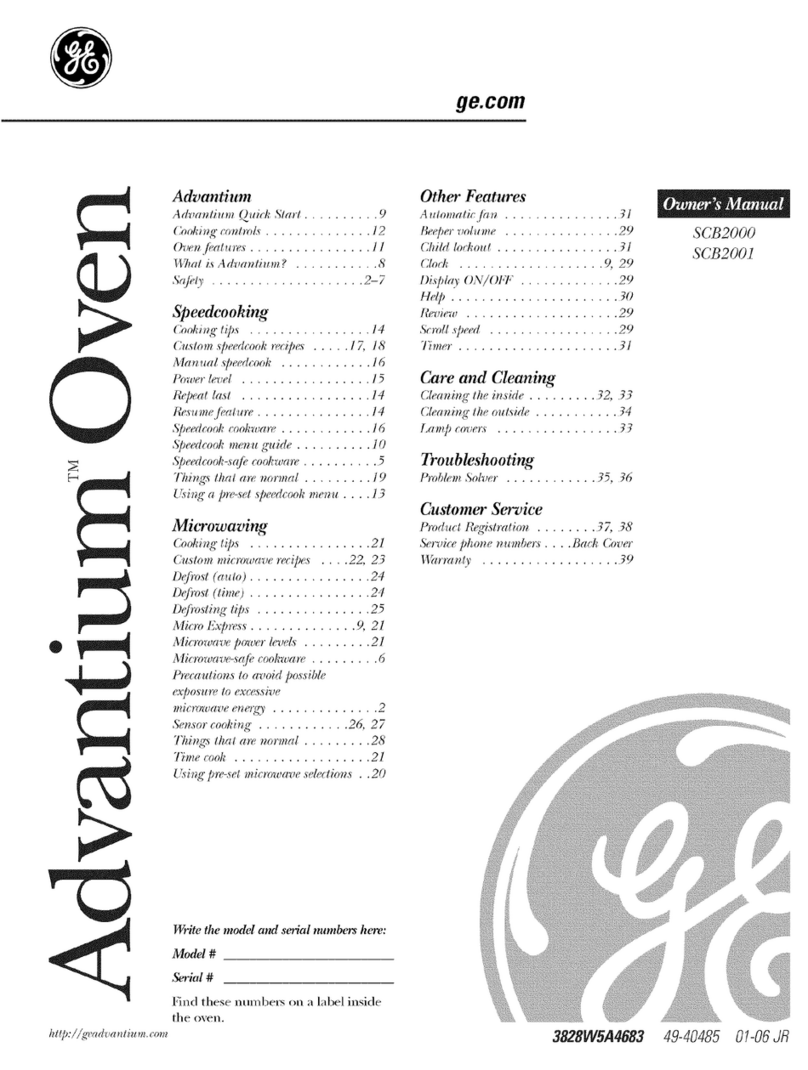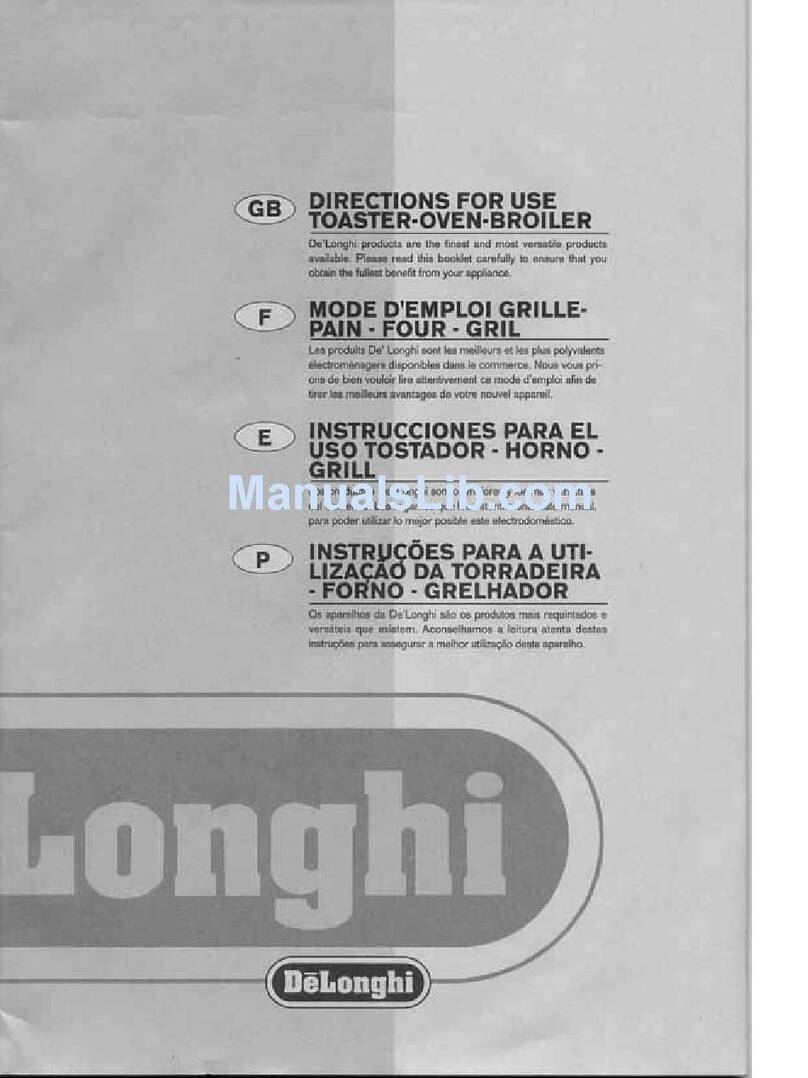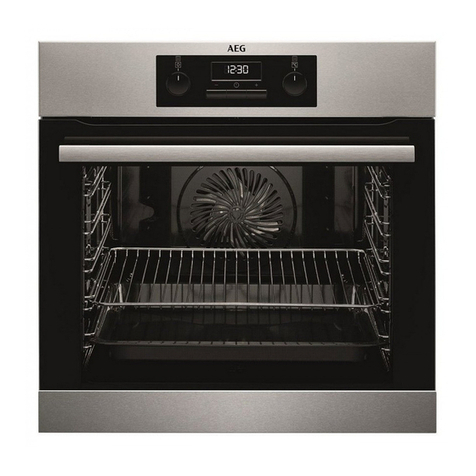3
ÚTable of contents
[en]Instructionmanual
Important safety information..................................................... 4
Causes of damage .............................................................................5
Energy and environment tips .................................................... 6
Saving energy......................................................................................6
Environmentally-friendly disposal.....................................................6
Your new appliance .................................................................... 6
Control panel .......................................................................................6
Operating modes ................................................................................7
NeffLight® ............................................................................................8
Your accessories........................................................................8
Accessories .........................................................................................8
Inserting accessories .........................................................................8
Shelf positions .....................................................................................9
Optional accessories .........................................................................9
Before using the appliance for the first time ........................... 9
Setting the language ..........................................................................9
Setting the water hardness ...............................................................9
Altitude calibration ........................................................................... 10
Setting the clock .............................................................................. 10
Cleaning the appliance................................................................... 10
Operating the appliance .......................................................... 10
Switching on the appliance............................................................ 10
Selecting operating mode and temperature............................... 11
Filling and emptying the water tank ............................................. 11
Switching off the appliance ............................................................ 12
After each steam-assisted use ...................................................... 12
Automatic safety cut-out ................................................................. 12
Changing the basic settings ................................................... 13
Electronic clock ........................................................................ 13
Clock display .................................................................................... 13
Timer .................................................................................................. 14
Cooking time .................................................................................... 14
End of operation .............................................................................. 14
Preset operation............................................................................... 15
Setting the clock .............................................................................. 15
Rapid heat up ................................................................................... 15
Checking, correcting or deleting settings ................................... 15
Childproof lock ......................................................................... 15
Lock .................................................................................................... 15
Permanent lock ................................................................................ 16
Baking ....................................................................................... 16
Baking on one level......................................................................... 16
Baking on two or more levels ....................................................... 16
Baking table ...................................................................................... 17
Baking table for ready-made products........................................ 18
Tips and tricks .................................................................................. 19
Roasting and braising.............................................................. 19
Roasting............................................................................................. 20
Braising .............................................................................................. 20
Tables for roasting and braising ................................................... 20
Tips and tricks .................................................................................. 22
Low-temperature cooking ....................................................... 22
Using Low-temperature cooking ................................................... 22
Table for Low-temperature cooking ............................................. 22
Tips and tricks .................................................................................. 23
Grilling....................................................................................... 23
Circo-roasting ................................................................................... 23
Radiant grilling ................................................................................. 23
Grilling table...................................................................................... 24
CircoTherm® eco...................................................................... 25
Dough proving.......................................................................... 26
Yeast dough ..................................................................................... 26
Yoghurt .............................................................................................. 27
Steam ........................................................................................ 27
Steam cooking ................................................................................. 27
AquaAssist - steam-assisted cooking.......................................... 28
Automatic programmes .................................................................. 29
Reheat - warming using steam ............................................... 31
Defrost....................................................................................... 32
Defrosting with CircoTherm® ........................................................ 32
Defrost ............................................................................................... 32
Preserve .................................................................................... 32
Cleaning and care .................................................................... 33
Cleaning the appliance exterior .................................................... 33
Cleaning the cooking compartment............................................. 34
Descaling .......................................................................................... 34
Self-cleaning surfaces..................................................................... 35
Oven cleaning .................................................................................. 35
Removing and fitting the appliance door.................................... 35
Cleaning the door panels............................................................... 36
Cleaning the hook-in racks ............................................................ 38
Cleaning the telescopic shelves ................................................... 38
Faults and repairs .................................................................... 38
Replacing the oven light bulb ....................................................... 39
Changing halogen bulbs ................................................................ 40
Changing the door seal.................................................................. 40
After-sales service ................................................................... 41
E number and FD number ............................................................. 41
Test dishes................................................................................ 42
Produktinfo
Additional information on products, accessories, replacement
parts and services can be found at www.neff-
international.com and in the online shop www.neff-
eshop.com
